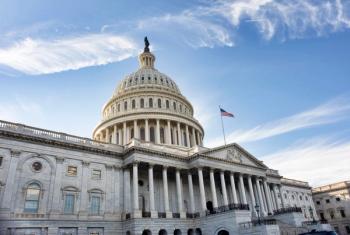
Using Research, Best Practices to Fight the Opioid Epidemic
Despite the great amount of attention paid to the American opioid epidemic, abuse remains at an all-time high. It's time for a new perspective.
To illustrate the gravity of the opioid epidemic in America, Darshak Sanghavi, MD, began his session at the Healthcare Information and Management Systems Society (HIMSS) Annual Conference with a sobering statistic.
“By the time this session is over, four lives in the U.S. will have been claimed by opioids,” he said.
Sanghavi, chief medical officer for healthcare collaborative OptumLabs, spoke on the complex nature of the opioid crisis at the event, held this year in Las Vegas.
He outlined the need to accurately understand the epidemic's root causes and how to address them by looking at four main components: prevention, pain management, opioid use disorder (OUD) treatment, and maternal and child health.
The prevention component of the opioid epidemic includes looking at additional prescribing indicators. "The biggest problem is around initial dosage-people often prescribe too much. The second biggest problem is the initial supply-the duration [of the prescription] is too long," said Sanghavi.
The pain management component needs to look deeper at both chronic pain as well as post-surgical pain management, according to Sanghavi.
Combating OUD treatment includes cutting off at-risk patients' supply of opioids, while addressing the maternal and child health component requires collecting data on infants with neonatal abstinence syndrome (NAS).
Addressing these four components requires framework, the implementation of which is not easy in the current healthcare system, noted Sanghavi. "The measurement system and quality system is broadly broken here in the U.S. It's a multi-year soul-sucking process to develop a measure and get it endorsed."
Co-presenter Molly Jeffery, PhD, a scientific director of emergency care research at the Mayo clinic, began her remarks off with an interesting tidbit, similar to Sanghavi's method, asking the crowd "How many people get their first prescription opioids from the ER?" The crowd consensus was around 50 percent, while research shows only 15 percent of patients get exposed to opioids through an emergency room.
Jeffery revealed disabled Medicare recipients as the most prevalent users of opioid prescriptions from an emergency room at 41 percent. Older Medicare patients were next at 15 percent, followed by patients with commercial health plans at just 6 percent. All three demographics received opioid prescriptions from outside ER walls more often than not.
In fact, emergency rooms are far better at prescribing patients using what Jeffery calls the “best practices for prescribing.”
Jeffery then pointed out three metrics to hone in on regarding emergency room patients' potential to get hooked on opioids, each of which make up her best practices: a prescription longer than seven days, a dose of more than 50 MME a day, and 10-plus refills or more than 120 days of use. "Every time you get exposed to opioids is like being exposed to a virus, you have a greater risk to keep using," said Jeffery.
Newsletter
Optimize your practice with the Physicians Practice newsletter, offering management pearls, leadership tips, and business strategies tailored for practice administrators and physicians of any specialty.






